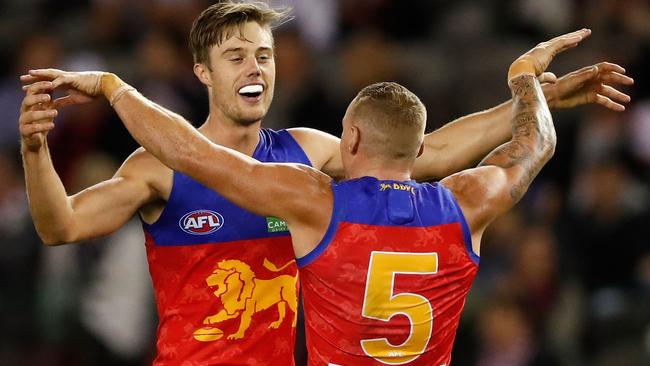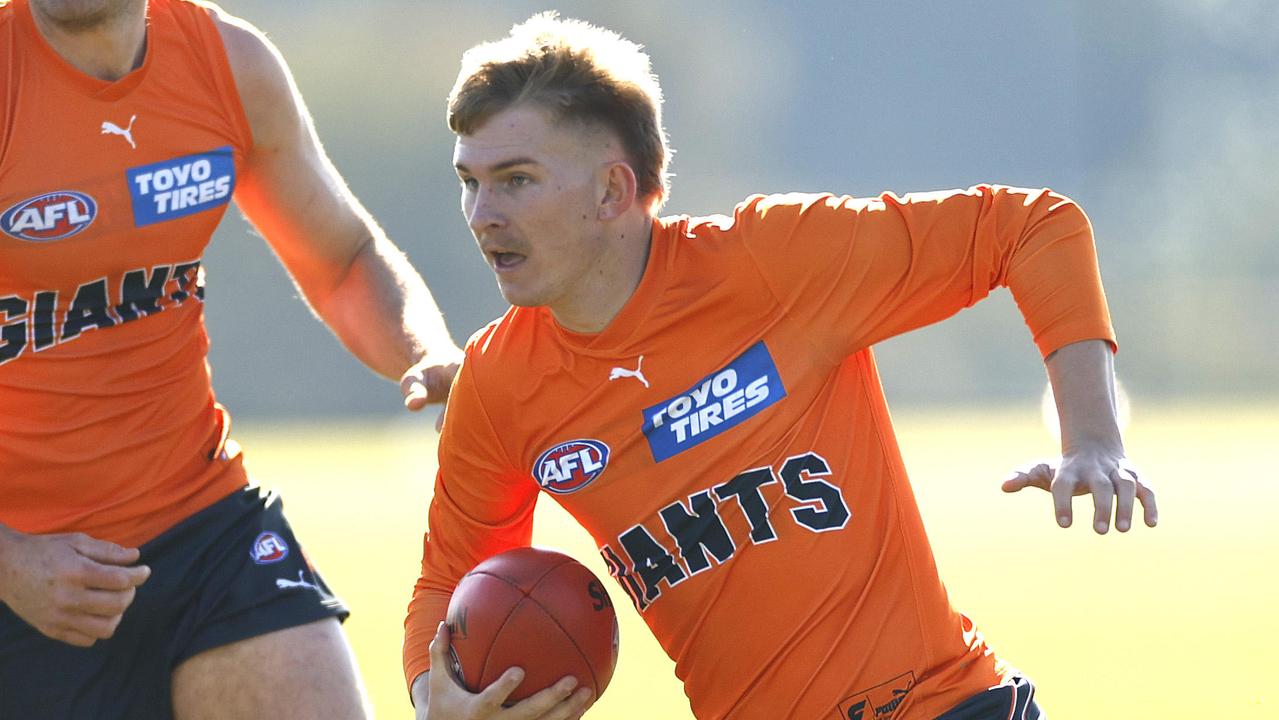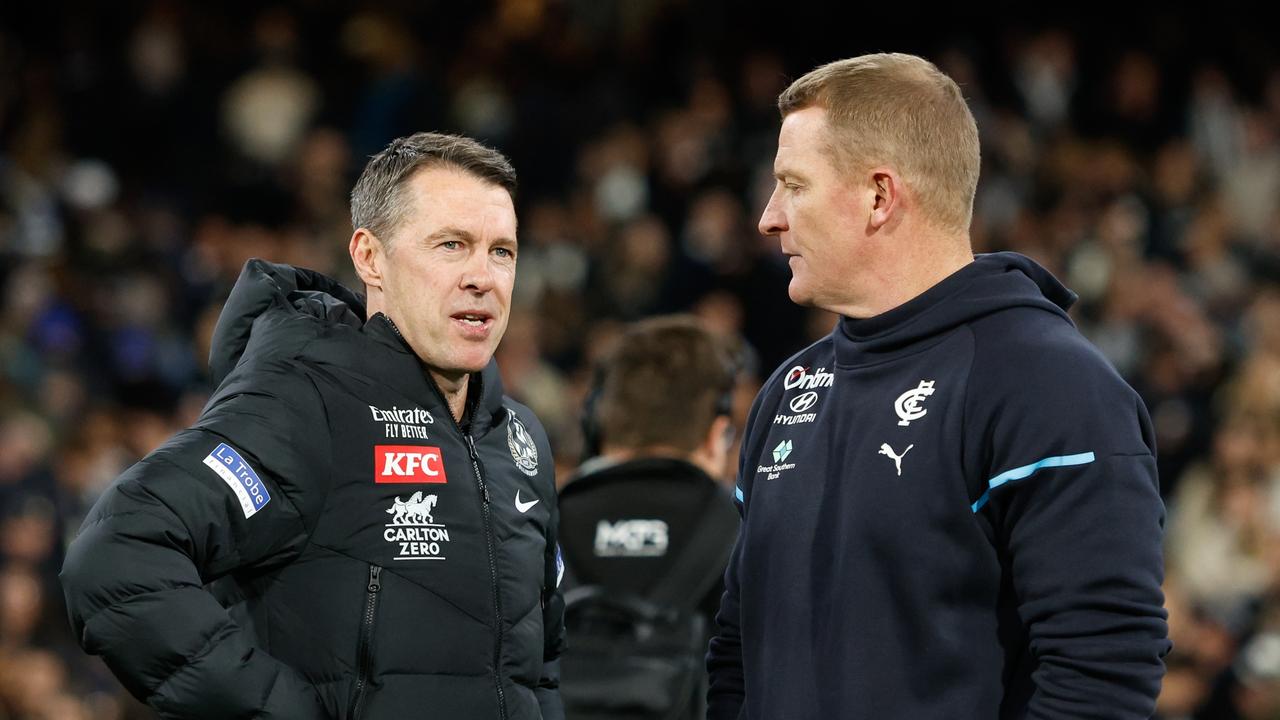Jon Ralph looks at how the AFL can help clubs retain top draft picks for more than two years
FROM Josh Schache to Tom Boyd and James Aish, is it time for clubs to get more support when it comes to top draft picks and the dreaded “go home” trade request?

Jon Ralph
Don't miss out on the headlines from Jon Ralph. Followed categories will be added to My News.
WE already knew contracts meant very little when Tom Boyd left Greater Western Sydney after just nine games and a single year.
This year we have gone to a new level with Brisbane effectively shunting Josh Schache out the door two seasons into a likely 12-year career.
Both players were Victorians with the lure of returning home heightened by the reality they had 10 nominal suitors in clubs in their home state.
LIVE: ROLLING NEWS FROM DAY 9 OF TRADE PERIOD
MATTHEW LLOYD: CLUBS MISSING OUT ON STAR
LION RETURN: SCHACHE READY TO ROAR IN 2018
TOP 50: WHO MADE IT AND WHO MISSED OUT?
Boyd and Schache were seen to be players to build a team around and yet by Thursday Schache will likely follow Boyd out the door.
That the Lions are pushing Schache out is a little bizarre, but no one doubts that top-10 picks leaving clubs after one or two years is bad for the industry.

No wonder the Lions are gun-shy, having recently lost James Aish just two years into his tenure as a top-10 pick.
So how does the AFL help clubs — mostly non-Victorians — to retain their players for enough time to give them the chance to re-sign them long-term?
Right now every player signs a standard two-year contract that by rights should keep them there at least that long.
Is it time to extend that initial contract to three years for first-round or top-20 picks?
But put in place rules so that ensure both player and club commit to each other for that period of time.
Right now clubs don’t want standard three-year contracts because they don’t want to commit for three years to a Hail Mary pick on a kid from Back of Burke they took at pick 89.
And those contracts would mean nothing anyway given we have already identified clubs and players break them anyway.
If you are prepared to take a player in the top 20 you are prepared to commit to them for three years.
Especially if you know that they can’t walk out on you at the drop of a hat.
It would give clubs time to show their culture, to absorb a bad year without their star recruit walking out.
It would mean a case of the second-year blues — which Schache suffered this year — didn’t automatically mean the parties wanted to break up with each other.
Clubs would need to have the capacity to sign contract extensions with those top-20 picks early, given the third year is often when salaries escalate.
But it would lock both parties into a three-year relationship they couldn’t break.
And it would at least give non-Victorian clubs a better chance of eradicating the talent retention issues which plague them.
Chris Fagan says the current model with initial two-year deals is borderline ridiculous, but the issue didn’t progress in the CBA talks this year.

“I particularly think for first-round draft picks, it should be three to four years at least before they can consider moving somewhere else, unless there’s some extenuating circumstances,” Fagan said this year.
“Clubs invest a lot in those first-round picks, and if you’ve got the opportunity to keep them for longer, guaranteed, from a club perspective, that would be fantastic.
“To be thinking about your future two years into a start at a new place and whether you want to go somewhere else is borderline ridiculous.”
The irony is Brisbane has jumped first, seemingly believing it can’t keep Schache long-term so must trade him.
So once the dust settles on the inevitable Schache trade, it’s time for Fagan to again start the campaign to change a system that is failing interstate clubs.



